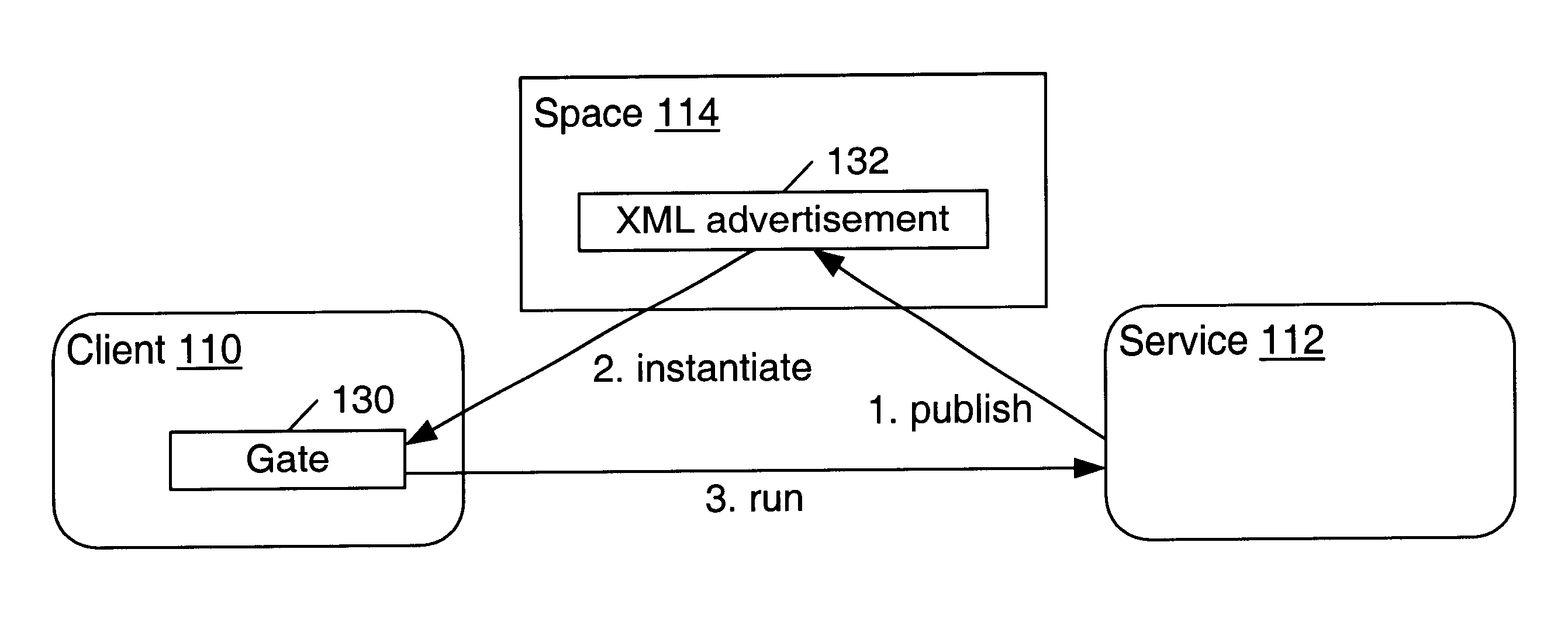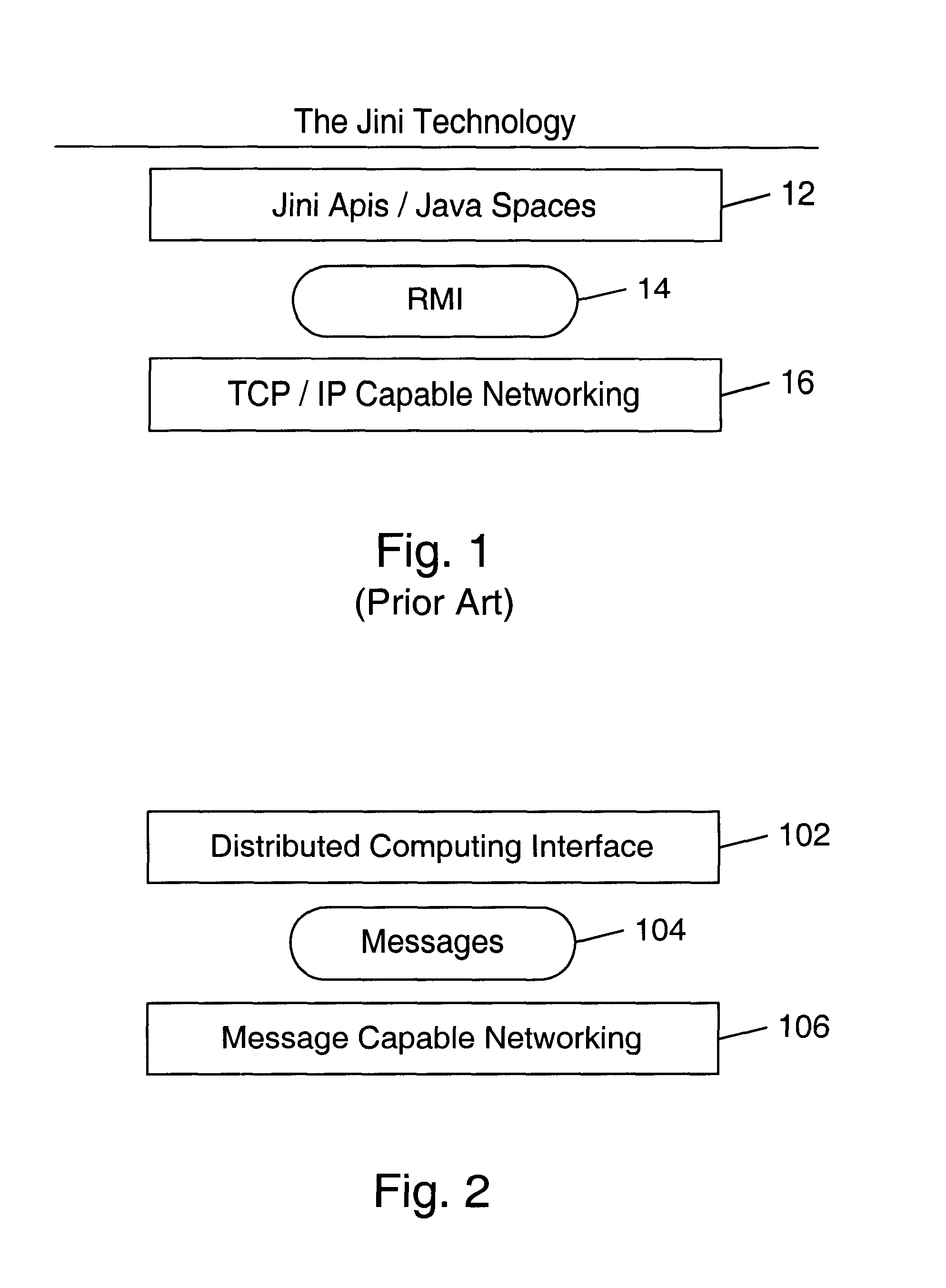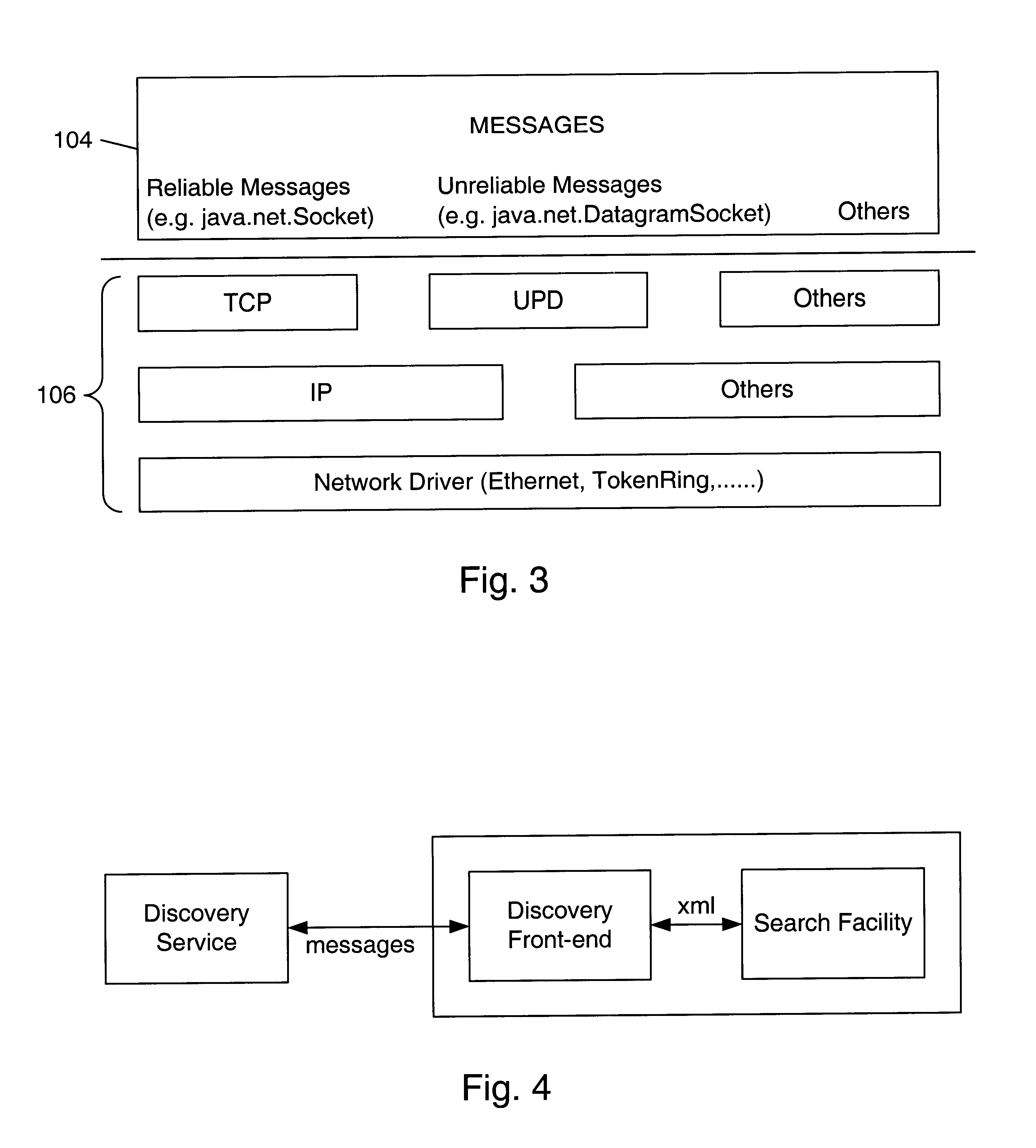However, there may be large differences in the computing power and storage capabilities of various intelligent devices.
Thin devices may not be able to participate in networks interconnecting devices that are more capable.
Currently, traditional networks are complex to set up, expand and manage.
Also, certain intelligent devices may not support the necessary interfaces to communicate on a given network.
However, these solutions are limited to specific
peripheral buses and are not suitable for general networks.
However, for certain types of devices, Jini may not be appropriate.
The key challenge for distributed computing technology is to be scalable from powerful thick clients down to very thin clients such as embedded mobile devices.
Current distributed computing technologies, such as Jini, may not be scalable enough for the needs of all types of clients.
Some devices, such as
small footprint devices or embedded devices, may lack sufficient memory resources and / or lack sufficient networking bandwidth to participate satisfactorily in current distributed computing technologies.
The low end of the client spectrum, including embedded mobile devices, often have limited or fixed code execution environments.
These devices also may have minimal or no persistent storage capabilities.
The size of the storage is often very small and sometimes read-only in nature.
Existing connection technologies, such as Jini, may not be as scalable as desired because they are too big.
For example, Jini requires that all participants support
Java; however, many small clients may not have the resources for a
Java Virtual Machine.
Jini may augment the existing client platform by downloading new classes, which may
pose security and size concerns for small devices such as embedded devices.
Also, RMI and Java itself require a lot of memory.
Many
small footprint devices may not have the resources to participate effectively or at all in current distributed computing technologies.
However, many smaller devices may have limited connection capabilities.
Small devices may have high latency or
low speed network connections and may not support TCP / IP.
This also restricts the flexibility of Jini in that non-Java devices may not directly participate in a Jini
system.
However, CORBA does not address all of the connection issues that are addressed by Jini.
Also, CORBA suffers from similar
scalability problems as Jini.
Many embedded or mobile devices simply cannot accept code dynamically from a network due to the
quality control issues involved as well as the reliance on a single language and program execution environment.
Data-centric models, such as networking, protocols, may avoid the dependence on moving code; however, such protocols are not rich enough to easily provide for distributed computing and they also lack the ease of
programming with code and other
programming features, such as
type safety.
However, communicating by passing code or objects, such as in Jini or CORBA, may be somewhat complex.
This code is quite large and inefficient.
The fundamental problems with the current method for doing
serialization / deserialization include, its size, speed, and object transversal model.
Traditional
serialization and reflection mechanisms for storing and moving Java objects are just not practical for all types of devices, especially thinner devices.
Some of the difficulties with Java reflection and
serialization are that an object's graph (an object's transitive closure) reflection is difficult to do outside the JVM.
Also, serialization is a Java specific object interchange format and thus may not be used with non-Java devices.
Thus, the serialization mechanism itself is not platform-independent since it may not be used by non-Java platforms to send and receive objects.
Serialization uses the reflection API and may be limited by security concerns, which often must be addressed using native JVM dependent methods.
The reflection API may provide a graph of objects, but is inefficient due to the number of calls between the JVM and the code calling the reflection methods.
Thus, Java serialization / deserialization is slow and cumbersome while also requiring large amounts of application and JVM code as well as persistent storage space.
Even for thin clients that do support Java, the Jini RMI may not be practical for thin clients with minimal memory footprints and minimal bandwidth.
Java deserialization is also slow, big and requires a serialized-object parser.
Even Java based thin clients may not be able to accept huge Java objects (along with needed classes) being returned (necessarily) across the network to the client as required in Jini.
In addition, these
object storage systems are too complicated to be used with many small, embedded systems.
However, a JavaSpace can only store Java objects and cannot be implemented in small devices.
As mentioned above, the Jini lookup
server may not be practical for small devices with small memory footprints.
However, Jini leases are
time based which may result in a number of problems.
For example, the current object holder might have no idea how long to lease an object and may hold it too long.
Thus, the Jini leasing mechanism suffers from the above-noted problems with using RMI.
A
mobile client will often be at a temporary dynamic
network address, so networking messages it sends cannot be routed beyond that networking interface (otherwise there may be collisions when two different clients on different networks have the same dynamic address).
Mobile clients often do not have the capability for a full function browser or other sophisticated
software.
The displays may limit the client from running certain applications.
 Login to View More
Login to View More  Login to View More
Login to View More 


